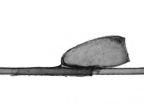(Press-News.org) February 25, 2014 -- From 1971-1982, Air Force reservists, who flew in 34 dioxin-contaminated aircraft used to spray Agent Orange and returned to the U.S. following discontinuation of the herbicide spraying operations in the Vietnam War, were exposed to greater levels of dioxin than previously acknowledged, according to a study published today in Environmental Research by senior author Jeanne Mager Stellman, PhD, professor emerita at the Mailman School of Public Health's Department of Health Policy and Management.
"These findings are important because they describe a previously unrecognized source of exposure to dioxin that has health significance to those who engaged in the transport work using these aircraft," according to Dr. Stellman and Peter A. Lurker, PhD, PE, CIH, an environmental engineer with many years of experience evaluating environmental exposures in the Air Force.
During the Vietnam War, in an operation known as "Operation Ranch Hand," approximately 20 million gallons of herbicides, including around 10.5 million gallons of dioxin-contaminated Agent Orange, were sprayed by 34 C-123 aircraft. These aircraft were subsequently returned to the U.S. and were used by Air Force reserve units between 1971 and 1982 for transport operations. After many years without monitoring, tests revealed the presence of dioxin (also known as TCDD). All but three of the aircraft were smelted down in 2009.
The Air Force and Department of Veterans Affairs have previously denied benefits to these crew members. Current policies stipulate that "non-biologically available dried residues" of chemical herbicides and dioxin would not have led to meaningful exposures to flight crew and maintenance personnel, who are therefore ineligible for Agent Orange-related benefits or medical examinations and treatment.
Researchers estimated dioxin body burden using modeling algorithms developed by the US Army and data derived from surface wipe samples collected from aircraft used in Operation Ranch Hand. They compared estimates with available guidelines and standards and discuss the implications with respect to current Air Force and VA policies.
These models suggest that the potential for dioxin exposure to personnel working in the aircraft post-Vietnam is greater than previously believed and that inhalation, ingestion, and skin absorption were likely to have occurred during post-Vietnam use of the aircraft by aircrew and maintenance staff. The estimated dermal and oral exposure exceeded US standards. The estimated airborne contamination exceeded the only available (German) standard.
Dr. Stellman and her co-authors Drs. Fred Berman, DVM, PhD, director of Toxicology at Oregon Health Sciences University and Richard Clapp, professor emeritus, Boston University School of Public Health had previously consulted with the Senate Veterans Affairs Committee on the unresolved issues of Agent Orange exposures in the aircrew. They teamed up with Dr. Lurker to develop the models to clarify the issue.
"Our findings, the results of three different modeling approaches, contrast with Air Force and VA conclusions and policies," concludes Dr. Stellman. "The VA concept of a "dried residue" that is biologically unavailable is not consistent with widely accepted theories of the behavior of surface residues. Aircraft occupants would have been exposed to airborne dioxin-contaminated dust as well as come into direct skin contact, and our models show that the level of exposure is likely to have exceeded several available exposure guidelines."
INFORMATION:
About Columbia University's Mailman School of Public Health
Founded in 1922, Columbia University's Mailman School of Public Health pursues an agenda of research, education, and service to address the critical and complex public health issues affecting New Yorkers, the nation and the world. The Mailman School is the third largest recipient of NIH grants among schools of public health. Its over 450 multi-disciplinary faculty members work in more than 100 countries around the world, addressing such issues as preventing infectious and chronic diseases, environmental health, maternal and child health, health policy, climate change & health, and public health preparedness. It is a leader in public health education with over 1,300 graduate students from more than 40 nations pursuing a variety of master's and doctoral degree programs. The Mailman School is also home to numerous world-renowned research centers including ICAP (formerly the International Center for AIDS Care and Treatment Programs) and the Center for Infection and Immunity. For more information, please visit http://www.mailman.columbia.edu
Air Force aircraft returned from Vietnam is postwar source of Agent Orange contamination
New evidence shows personnel exposed to meaningful levels of dioxin, contrary to current position held by Air Force and VA
2014-02-25
ELSE PRESS RELEASES FROM THIS DATE:
New clues found to preventing lung transplant rejection
2014-02-25
Organ transplant patients routinely receive drugs that stop their immune systems from attacking newly implanted hearts, livers, kidneys or lungs, which the body sees as foreign.
But new research at Washington University School of Medicine in St. Louis suggests that broadly dampening the immune response, long considered crucial to transplant success, may encourage lung transplant rejection.
In a surprising discovery, the researchers found that newly transplanted lungs in mice were more likely to be rejected if key immune cells were missing, a situation that simulates ...
Ordinary conditioner removes head lice eggs as effectively as special products
2014-02-25
Eggs from head lice, also called nits, are incredibly difficult to remove. Female lice lay eggs directly onto strands of hair, and they cement them in place with a glue-like substance, making them hard to get rid of. In fact, the eggs are glued down so strongly that they will stay in place even after hair has been treated with pediculicides -- substances used to kill lice.
Some shampoos and conditioners that contain chemicals or special oils are marketed as nit-removal products. However, new research just published in the Journal of Medical Entomology shows that ordinary ...
Research links risky behaviors of gambling and sex
2014-02-25
February 25, 2014 -- Late adolescence is a period when many youth become involved in high-risk behaviors with adverse consequences. Researchers at the Mailman School of Public Health with colleagues at Johns Hopkins University studied the degree to which two such behaviors, adolescent sexual behaviors and gambling, affected African American youth in nine primary schools in Baltimore, MD. In data collected from a cohort study, they assessed whether certain adolescent sexual behaviors linked with unintended consequences such as adolescent pregnancy and sexually transmitted ...
Dartmouth-led research shows temperature, not snowfall, driving tropical glacier size
2014-02-25
Temperature, not snowfall, has been driving the fluctuating size of Peru's Quelccaya Ice Cap, whose dramatic shrinkage in recent decades has made it a symbol for global climate change, a Dartmouth-led study shows.
The findings support many scientists' suspicions that tropical glaciers are rapidly shrinking because of a warming climate, and will help scientists to better understand the natural variability of past and modern climate and to refine models that predict tropical glaciers' response to future climate change.
The study appears in the journal Geology. A PDF ...
PFC exposure may spark metabolic changes in overweight children
2014-02-25
Washington, DC—Overweight children who were exposed to higher levels of perfluorinated chemicals tended to show early signs of developing the metabolic syndrome, according to a new study published in The Endocrine Society's Journal of Clinical Endocrinology & Metabolism.
The term metabolic syndrome describes a cluster of risk factors that increase the chances of developing heart disease, stroke and diabetes. The study is the first to find changing metabolic markers in children were associated with exposure to perfluorinated chemicals (PFCs), common industrial chemicals ...
Vitamin D deficiency may compromise immune function
2014-02-25
Washington, DC—Older individuals who are vitamin D deficient also tend to have compromised immune function, according to new research accepted for publication in the Endocrine Society's Journal of Clinical Endocrinology & Metabolism (JCEM).
Vitamin D plays an important role in helping the body absorb calcium needed for healthy bones. The skin naturally produces vitamin D when it is exposed to sunlight. People also obtain smaller amounts of the vitamin through foods, such as milk fortified with vitamin D. More than 1 billion people worldwide are estimated to have deficient ...
Tissue repair drug helps heal diabetic foot ulcers
2014-02-25
Washington, DC—Patients were twice as likely to have a diabetic foot ulcer heal within eight weeks when they were treated with a tissue repair drug versus a placebo, according to new research accepted for publication in the Endocrine Society's Journal of Clinical Endocrinology & Metabolism (JCEM).
Foot ulcers are a common complication from diabetes than can lead to hospitalization and lower limb amputation. In 2006, about 65,700 non-traumatic lower-limb amputations were performed in people with diabetes, according to the Centers for Disease Control and Prevention. Up ...
New study presents evidence that blood pressure should be measured in both arms
2014-02-25
Philadelphia, PA, February 25, 2014 – As heart disease continues to be one of the leading causes of death in the United States, practitioners and patients alike are looking for ways to cut risk factors and identify new clues to assist with early detection. New research published in the March issue of The American Journal of Medicine suggests that there is an association between a difference in interarm systolic blood pressure and a significant increased risk for future cardiovascular events, leading researchers to recommend expanded clinical use of interarm blood pressure ...
Ecotoxicity: All clear for silver nanoparticles?
2014-02-25
It has long been known that, in the form of free ions, silver particles can be highly toxic to aquatic organisms. Yet to this day, there is a lack of detailed knowledge about the doses required to trigger a response and how the organisms deal with this kind of stress. To learn more about the cellular processes that occur in the cells, scientists from the Aquatic Research Institute, Eawag, subjected algae to a range of silver concentrations.
In the past, silver mostly found its way into the environment in the vicinity of silver mines or via wastewater emanating from the ...
Georgia Tech project ensures 'what you see is what you send'
2014-02-25
Imagine a user who intends to send $2 to a friend through PayPal. Embedded malware in the user's laptop, however, converts the $2 transaction into a $2,000 transfer to the account of the malware author instead.
Researchers at Georgia Tech have created a prototype software, Gyrus, that takes extra steps to prevent malware from sending spam emails and instant messages, and blocking unauthorized commands such as money transfers.
Current protection programs might recognize the original user's intent to send email, transfer money or engage in other transactions, but cannot ...
LAST 30 PRESS RELEASES:
Making lighter work of calculating fluid and heat flow
Normalizing blood sugar can halve heart attack risk
Lowering blood sugar cuts heart attack risk in people with prediabetes
Study links genetic variants to risk of blinding eye disease in premature infants
Non-opioid ‘pain sponge’ therapy halts cartilage degeneration and relieves chronic pain
AI can pick up cultural values by mimicking how kids learn
China’s ecological redlines offer fast track to 30 x 30 global conservation goal
Invisible indoor threats: emerging household contaminants and their growing risks to human health
Adding antibody treatment to chemo boosts outcomes for children with rare cancer
Germline pathogenic variants among women without a history of breast cancer
Tanning beds triple melanoma risk, potentially causing broad DNA damage
Unique bond identified as key to viral infection speed
Indoor tanning makes youthful skin much older on a genetic level
Mouse model sheds new light on the causes and potential solutions to human GI problems linked to muscular dystrophy
The Journal of Nuclear Medicine ahead-of-print tip sheet: December 12, 2025
Smarter tools for peering into the microscopic world
Applications open for funding to conduct research in the Kinsey Institute archives
Global measure underestimates the severity of food insecurity
Child survivors of critical illness are missing out on timely follow up care
Risk-based vs annual breast cancer screening / the WISDOM randomized clinical trial
University of Toronto launches Electric Vehicle Innovation Ontario to accelerate advanced EV technologies and build Canada’s innovation advantage
Early relapse predicts poor outcomes in aggressive blood cancer
American College of Lifestyle Medicine applauds two CMS models aligned with lifestyle medicine practice and reimbursement
Clinical trial finds cannabis use not a barrier to quitting nicotine vaping
Supplemental nutrition assistance program policies and food insecurity
Switching immune cells to “night mode” could limit damage after a heart attack, study suggests
URI-based Global RIghts Project report spotlights continued troubling trends in worldwide inhumane treatment
Neutrophils are less aggressive at night, explaining why nighttime heart attacks cause less damage than daytime events
Menopausal hormone therapy may not pose breast cancer risk for women with BRCA mutations
Mobile health tool may improve quality of life for adolescent and young adult breast cancer survivors
[Press-News.org] Air Force aircraft returned from Vietnam is postwar source of Agent Orange contaminationNew evidence shows personnel exposed to meaningful levels of dioxin, contrary to current position held by Air Force and VA


